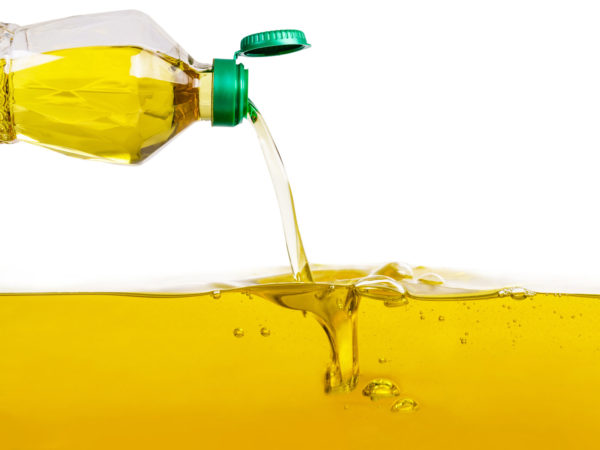Can a Gluten-Free Diet Increase Your Risk of Arsenic Poisoning?
Although most people don’t know exactly what arsenic is or what it does inside the body… just about all of us know that it is a deadly poison. In fact, just saying the word “arsenic” can conjure up images of a skull and cross bones or a vial full of poison.
So, what in the world are high levels of this deadly poison doing in so many common foods – many of which are specifically marketed as “healthy” and some of which are made just for babies?
The truth is that it is virtually impossible to avoid arsenic entirely. Because it is a chemical element found throughout the earth’s crust, it is often present in soil and groundwater. It is not uncommon to find minute traces of arsenic in everything from leafy greens and fruit to seafood and tap water.
But certain foods are especially high in this deadly poison. And what is even more troubling is that, while the Environmental Protection Agency has established safety standards for arsenic in drinking water at 10 ppb, no safety standard has been set for arsenic in food.
The result? According the independent analysis conducted by Consumer Reports, some common food products contain more than 90 times the arsenic that’s allowed in drinking water!
And the food that should cause the greatest concern is rice…
Arsenic in Rice Products Far Exceeds “Safe” Arsenic Limits
Rice plants take up silica to help them stand up in water-logged soils. But to the rice plant, arsenic “looks” very similar to silica. So any arsenic that is in the soil is easily taken up by the roots of the rice plant. In fact, rice pulls more arsenic from the soil than any other grain.
Another part of the problem is where the rice is grown. Much of the rice grown in the southeastern US is land that was once used for growing cotton. The pesticides that were previously used on cotton crops (many of which contain arsenic) persist in the soil and groundwater, thus increasing the arsenic available for uptake.
In the Consumer Reports investigation, all of the rice products tested contained some level of arsenic. Brown rice contained more arsenic than white rice. And concentrated forms of rice – like brown rice flour, brown rice syrup and certain processed foods – contained the highest levels of all.
This is of special concern for people following a gluten-free diet, because rice is often used to replace wheat. And because brown rice flour is typically the main ingredient in gluten-free baking mixes, breads, crackers, chips and pasta, just one daily serving of these foods could significantly increase the risk of arsenic poisoning.
Signs of acute arsenic toxicity include blood in the urine, severe stomach pain and convulsions as the poison damages the lungs, skin, kidneys and liver. But keep in mind that very small doses of a poison generally do not cause acute symptoms.
Instead, their toxic effects build up and accumulate over time. The symptoms chronic low-level arsenic consumption can be very mild at first, including headaches, brain fog, diarrhea, and drowsiness. Often, these symptoms are discounted as general malaise.
However, studies show that these chronic low-level exposures can lead to heart disease, cancer, stroke, chronic respiratory illness, and even diabetes.
And while arsenic is dangerous for adults, it is an even greater concern for infants and children, whose brains and bodies are still developing. Arsenic exposure during these early years is associated with delayed brain development, speech and motor impairment and neuro-behavioral problems… as well as chronic diseases (including cancer and lung disease) in adulthood.
And unfortunately, rice cereal is one of the first foods consumed by many infants. Consider these numbers reported by Consumer Reports (and keep in mind that the EPA upper limit for drinking water is 10 ppb):
- Gerber Rice Cereal – 264 ppb
- Earth’s Best Organic Whole Grain Rice Cereal – 274 ppb
And that’s not all, because many children’s snack foods – like gummy fruits, fruit leathers and other fruit snacks – are sweetened with brown rice syrup, an even more concentrated source of contaminants.
Or consider the surprisingly high levels of arsenic reported in these common gluten-free foods:
- Arrowhead Mills Organic Sweetened Rice Flakes – 963 ppb (!!)
- Della Basmati Brown Rice – 568 ppb
- Arrowhead Mills Organic Brown Rice Flour – 565 ppb
- Trader Joe’s Organic Brown Rice Pasta Fusilli – 389 ppb
- Great Value Brown Rice (Walmart) – 360 ppb
- 365 Everyday Value Long Grain Brown Rice (Whole Foods) – 282 ppb
Unfortunately, arsenic cannot be entirely avoided. But by staying away from foods that are known to have high concentrations – rice and especially products made from brown rice – you’ll do a lot to reduce your exposure.
Reducing Dietary Arsenic Naturally
If you do consume rice, opt for white Basmati rice grown in California which has been shown to have a very low level – roughly 1.6 ppb – of arsenic per serving. Also, be sure to rinse rice thoroughly before cooking and discard any water that remains after cooking.
If you are concerned about previous exposure and your body burden of arsenic, focus on boosting detoxification.
- Support Methylation and Sulfation Detox Pathways: Get sufficient vitamin B6, B12 and folate in your diet. These vitamins are essential to activate these two key detoxification paths. Free range chicken and turkey, grass-fed beef and bison, and wild seafood provide ample amounts of vitamins B6 and B12 while leafy greens, asparagus, avocado and broccoli are excellent sources of folate.
- Boost Glutathione: Boost your body’s “master antioxidant and detoxifier” with high quality protein. Good choices include grass-fed whey protein (non-denatured like Vital Whey), grass-fed beef, bison, free range poultry eggs and wild seafood.
- Optimize Selenium and Iodine: Deficiencies in these two minerals has been found to increase the uptake and storage of arsenic in the body. Eat raw Brazil nuts for a superior source of selenium and boost iodine levels with wild shrimp and lobster.
Unfortunately, no food is entirely without risk. Arming yourself with information and adhering to the native grain-free diet of our ancestors is the best way to protect against the contaminants found in the modern day food supply.





Leave a Reply